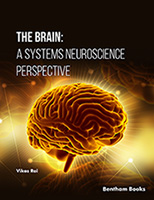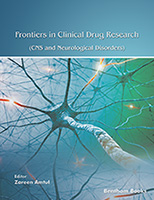A rise in prevalence of chronic non-communicable diseases, including heart disease,
hypertension, chronic obstructive pulmonary disease, chronic kidney disease, diabetes
mellitus, stroke, cancers and osteoarthritis, have been observed among older people in many
countries [1, 2]. A substantial and increased proportion of morbidity and mortality due to
chronic disease occurs in older people. To compound this burden on the older individual and
society in general, effective intervention is complicated by ageism, complex multiple
comorbidity and lack of access to age-appropriate care. The purpose of this book is to address
some of the medical care needs that exist for eleven common chronic conditions in older
people. An additional chapter on end-of-life care will address the needs of older people with
chronic diseases as they approach the terminal phase of life.
The chapter on coronary artery disease (CAD) in the elderly will look at the epidemiology,
differences in clinical presentations and approach to evaluation and management that is
appropriate for this age group. In particular issues on invasive assessment of the coronary
artery and revascularisation procedures in older people with CAD will be addressed.
Heart failure is common in the older population and is associated with a poor prognosis.
Managing older people with heart failure is a challenge because presenting features can be
different from younger patients and the risk of adverse effects from polypharmacy. The
chapter on heart failure aims to address these issues.
Hypertension is a common chronic condition in older people and an important risk factor for
many vascular diseases. Therefore the chapter on hypertension in older people will examine
the evidence for controlling hypertension, target blood pressure and which antihypertensive
agents to use in this age group.
Diabetes mellitus, especially type 2 diabetes, is a condition that affects many older people,
about 20% of those aged ≥65 years. Like younger people, diabetes in the older age group is
associated with significant morbidity, reduction in quality of life and mortality. In the older
population, diabetes is associated with an increased risk of geriatric syndromes such as
cognitive impairment, urinary incontinence and falls, which require careful assessment and
management. The chapter on diabetes mellitus will look at some of the chronic problems
faced by older people living with this condition.
Alzheimer’s disease has emerged as a major public health concern globally which has a
significant impact on the patient, family, caregivers and health care system. Although it has
been recognised for more than a century, its pathogenesis is still not understood and benefits from pharmacological treatment has been limited so far. The chapter on Alzheimer’s disease
will provide updates on neuroimaging, nonpharmacological and pharmacological treatment.
Ischaemic stroke is associated with one of the highest causes of disability in older people.
Evidence suggest that older people with ischaemic stroke often receive less effective therapy
and experience poorer outcomes compared with younger patients. The chapter on ischaemic
stroke in this book will review the available evidence on secondary prevention and treatment
of this condition in older people and reducing the disability burden among survivors after the
acute event.
Many older people have chronic obstructive pulmonary disease (COPD) as a result of
smoking and age-related pulmonary changes. COPD is associated with increased morbidity
and mortality for the older population. The chapter on COPD will look at the diagnostic and
therapeutic aspects of this condition that are relevant to the older age group.
Cancers are increasingly diagnosed among people aged ≥65 years and this age group makes
up more than 50% of new diagnosis of malignancy. Cancer care in older people is complex
and challenging which is further compounded by limited evidence on the risk-benefit of
treatments. The chapter on cancers in the elderly will review the differences in approach to
management and identify gaps in evidence related to care of this group of older patients.
Osteoarthritis, especially in the hip or knee, is a common diagnosis in older people that causes
significant pain leading to disability and decreased quality of life. Management of
osteoarthritis in these joints among the elderly is challenging because they often have multiple
chronic conditions that can compound pain and increased susceptibility to adverse effects of
analgesics. The chapter on osteoarthritis will review evidence-based nonpharmacological,
pharmacological and surgical approaches to management of this condition in the hips and
knees of older people.
Osteoporosis and fragility fractures are highly prevalent in older people, with the latter
associated with significant disability, mortality and health care cost. Osteoporosis is still
underdiagnosed and undertreated among older people. The chapter on osteoporosis will
examine the efficacy of both nonpharmacological and pharmacological strategies in the
management of this condition and prevention of associated fragility fractures among the older
population.
The prevalence of chronic kidney disease (CKD) in the older population is steadily increasing
worldwide. Management of CKD in older people is complex because there are many
competing factors that have to be taken into consideration. One of the chapters will attempt to
untangle some of these complexities and provide an updated review on a holistic approach in
management of older people with CKD.
As most of the chronic diseases described in this book have no cure, it is inevitable that these
diseases will affect older people at the end of life. Evidence indicates that technology-driven
interventions at the end of life do not necessarily improve satisfaction with care or quality of
life. As a result, the final chapter of this book will address the need for advanced care
planning and provision of good quality end-of-life care that is in concordance with the older
patients’ and their family’s or caregivers’ goals.
In this book, the authors have sought to provide educational and updated reviews on common
chronic diseases encountered in geriatric medicine. Although the chapters in this book are not
an exhaustive list of all chronic diseases, they review conditions that are frequently managed
as part of day-to-day clinical practice. Managing older people with chronic diseases require a
holistic approach with comprehensive assessment, leading to well integrated continuing care
and focusing foremost on patients’ goals in an effort to streamline care.
REFERENCES
[1] Freedman VA, Martin LG, Pell JP. Contribution of chronic conditions to aggregate changes in old-age
functioning. Am J Public Health 2000; 90(11): 1755-60.
[PMID: PMC1446390]
[2] Bhattacharya J, Choudhry K, Lakdawalla D. Chronic disease and severe disability among working-age
populations. Med Care 2005; 46(1): 92-100.
[PMID: 18162861]
Tuck Yean Yong
Internal Medicine, Flinders Private Hospital
Flinders Drive, Bedford Park
South Australia 5042
Australia









